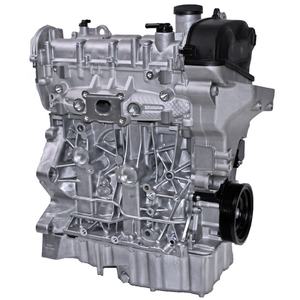Comprehensive Review of a Subcompact Automobile's Powertrain Capabilities
In the realm of automotive engineering, the powertrain of a subcompact auto stands as a vital nexus where performance, performance, and innovation converge. From the engine's ruthless pursuit of optimum performance to the transmission's seamless choreography of power distribution, every element plays an essential function in specifying the overall driving experience.
Engine Performance Evaluation
In evaluating the engine efficiency of the subcompact cars and truck, a detailed analysis reveals its effectiveness and power result under various driving problems. The subcompact car's engine, a critical part of its powertrain system, shows good performance metrics.
Furthermore, when based on extensive testing circumstances such as high-speed acceleration or uphill climbs, the engine demonstrates durability and responsiveness. Its power outcome stays regular, offering appropriate velocity when required. The subcompact car's engine is tailored to satisfy the needs of urban driving, where quick velocity and nimble maneuverability are necessary.
Furthermore, the engine's design includes modern-day innovations that enhance its performance features. Functions like turbocharging or variable valve timing add to enhanced power distribution and torque, enhancing the overall driving experience. In verdict, the engine performance of the subcompact vehicle highlights its ability to supply reliable and dependable power output throughout various driving problems.
Transmission Effectiveness Analysis
Analyzing the subcompact cars and truck's transmission efficiency includes analyzing its performance in transmitting power seamlessly across various driving conditions. The efficiency of a transmission system is critical as it straight impacts the overall performance and fuel economic situation of the vehicle. In assessing transmission effectiveness, aspects such as equipment proportions, change timing, and the level of smoothness of gear changes are thought about. A well-designed transmission system should successfully supply power from the engine to the wheels while decreasing power losses.
One usual method made use of to examine transmission efficiency is with dynamometer testing, where the power result from the engine is determined at the input and output shafts of the transmission. By assessing these elements, designers can determine areas for improvement and enhance the transmission system for better total performance and effectiveness.
Fuel Efficiency Exam
The examination of the subcompact vehicle's gas efficiency includes a comprehensive evaluation of its usage rates under numerous driving problems. Gas efficiency is a critical factor in assessing the total performance and cost-effectiveness of an automobile. By gauging the amount of fuel taken in per system range took a trip, usually shared as miles per gallon (MPG) or liters per 100 kilometers (L/100 km), the performance of the subcompact vehicle's powertrain can be established.

Additionally, improvements in modern technology, such as crossbreed systems, regenerative stopping, and automatic start-stop systems, have dramatically boosted fuel effectiveness in modern subcompact cars and trucks. Suppliers proceed to optimize and innovate powertrain elements to improve gas effectiveness while fulfilling efficiency needs and environmental guidelines. Reviewing a subcompact car's gas performance offers beneficial understandings for customers seeking cost-effective and lasting transport solutions.
Velocity and Handling Analysis
An essential aspect of examining the efficiency capacities of a subcompact car exists in examining its velocity and taking care of features. Velocity is important as it figures out how rapidly the automobile can get to preferred speeds, influencing total driving experience and maneuverability in various traffic conditions. opel corsa engine. Subcompact automobiles are frequently preferred for their nimbleness and dexterity, making acceleration from dead stop and during surpassing maneuvers crucial elements to consider
When it involves dealing with, a subcompact vehicle's capacity to navigate corners, keep stability at broadband, and offer a receptive steering feeling are vital. Limited city roads and winding roadways need precise taking care of to guarantee motorist confidence and safety and security. Aspects such as suspension adjusting, weight distribution, and tire grasp play significant Home Page duties in identifying a subcompact vehicle's total handling prowess.

Powertrain Elements Overview
Upon delving right into the intricacies of a subcompact automobile's efficiency, a comprehensive assessment of its powertrain parts is vital to comprehend the vehicle's mechanical foundations. The powertrain directory of a subcompact cars and truck typically includes the engine, transmission, driveshaft, differential, and axles. The engine, commonly a smaller sized variation four-cylinder in a subcompact vehicle, is in charge of producing power by melting gas and transforming the power into mechanical pressure. The transmission, whether manual or automated, transfers this power to the wheels through the driveshaft. The differential enables the wheels to turn at various rates when transforming, boosting maneuverability. The axles transmit power from the differential to the wheels, enabling movement. Understanding how these components interact is important in examining a subcompact auto's total efficiency, performance, and driving characteristics. In the next section, we will certainly dive much deeper into the particular roles and interactions of each powertrain part to give an extensive summary of a subcompact car's powertrain capabilities.
Conclusion
To conclude, the subcompact cars and truck's powertrain abilities have actually been extensively assessed in terms of engine efficiency, transmission effectiveness, gas velocity, effectiveness, and handling. The comprehensive testimonial highlights the significance of each part interacting seamlessly to provide optimum efficiency. In general, the powertrain parts of the subcompact automobile have actually been found to be healthy and reliable, making it Home Page a trusted choice for motorists seeking a compact and fuel-efficient automobile.
In the world of automobile engineering, the powertrain of a subcompact automobile stands as an essential nexus where advancement, efficiency, and effectiveness assemble.In analyzing the engine efficiency of the subcompact car, an extensive analysis exposes its effectiveness and power result under various driving conditions.Assessing the subcompact vehicle's transmission effectiveness includes evaluating its performance in sending power seamlessly throughout numerous driving problems. Recognizing just how these elements work together is critical in analyzing a subcompact car's total efficiency, effectiveness, and driving dynamics.In conclusion, the subcompact car's powertrain abilities have been thoroughly assessed in terms of engine efficiency, transmission effectiveness, fuel handling, efficiency, and acceleration.